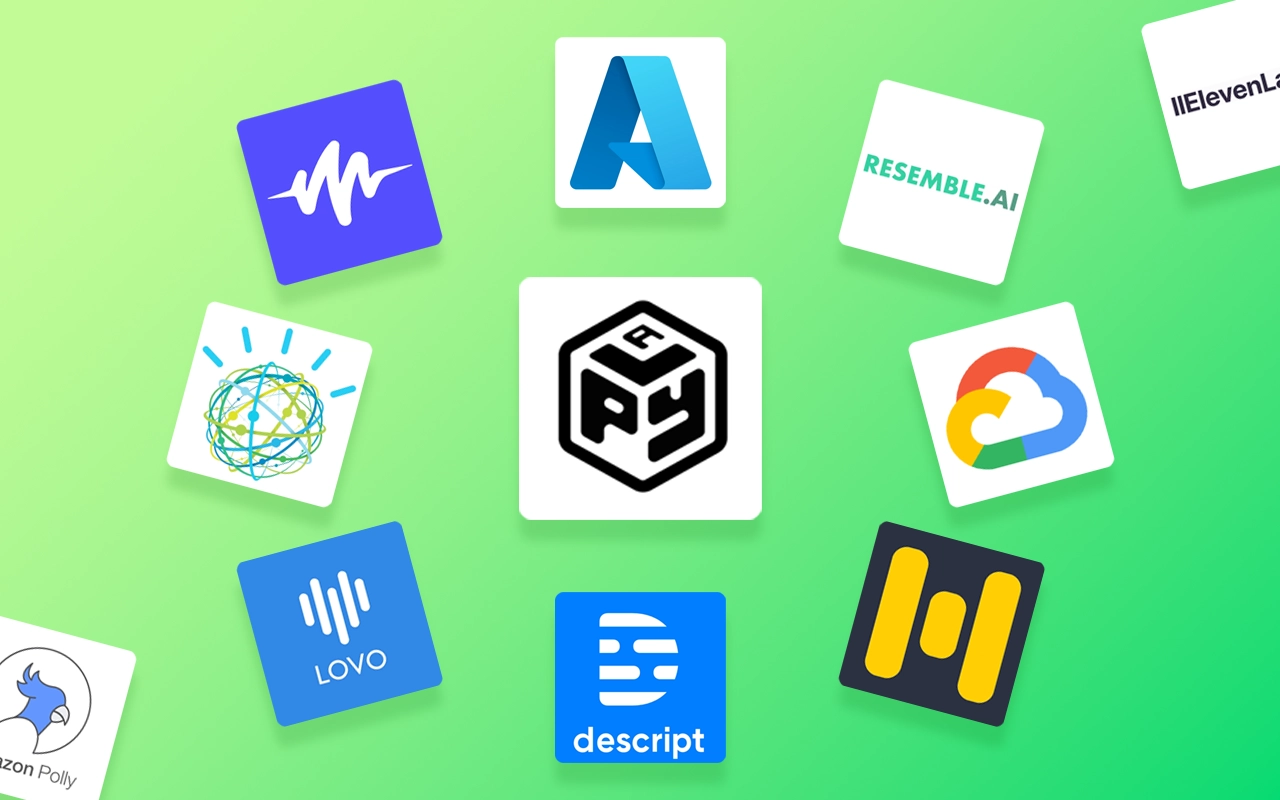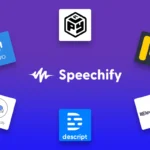The Best Text to Speech APIs Looking for the best text to speech APIs? see our curated list.

Generate AI Voices, Indistinguishable from Humans
Table of Contents
Text to speech APIs give voice to your favorite virtual assistants like Alexa and Siri, and so much more. But how do they work and what even is the best text to speech API? In this article, we’ll cover everything you need to know about text to speech APIs, from a look at the technology that powers them to the best text to speech API options on the market.
What is a text to speech API?
A text to speech application programming interface, otherwise known as a TTS API for short, is a tool, powered by artificial intelligence, deep learning, natural language processing, and speech recognition technology, that breathes life into written text, transforming text into spoken voice.
This functionality is not just about reading aloud; it’s about accessibility, convenience, and enhancing user experiences across various platforms. Developers integrate these APIs into apps, websites, and software, enabling them to speak to users — from reading out notifications to aiding those who require assistive technologies.
How text to speech APIs work
While text to speech APIs may seem like magic, there’s actually a science to it. So, how do TTS APIs work? At the heart of these APIs are advanced machine learning algorithms and neural networks, which are trained to understand the nuances of language and mimic natural-sounding voices.
When users input written text into a text to speech API, the system uses these algorithms to predict and emulate how human voices would articulate the content. Developers can also enhance the quality of speech synthesis by using speech synthesis markup language (SSML) to adjust the pitch, speed, and tone, ensuring the voice model’s output is as lifelike as possible.
Benefits of text to speech APIs
Imagine sipping your morning coffee while your favorite blog reads itself to you or learning a new language while you jog in the park by listening to a realistic AI voice read material aloud. Text to speech technology is all about breaking down barriers and making information accessible to everyone. Here’s a brief look into the diverse array of benefits that TTS APIs offer:
- Accessibility: Text to speech APIs enhance accessibility by enabling users with visual impairments or reading difficulties to consume content effectively.
- Enhanced user experience: TTS APIs contribute to an enhanced user experience by providing an alternative mode of interaction, catering to diverse user preferences.
- Time efficiency: Text to speech APIs enable rapid content consumption, particularly in scenarios where reading text may be time-consuming.
- Scalability: TTS APIs offer scalable solutions with flexible pricing models, making them suitable for both small-scale applications and enterprise-level deployments.
- Multilingual support: With multilingual support for languages, such as English and Spanish, text to speech APIs enable global reach and localization efforts.
Text to speech API use cases
So now that we’ve covered the science and benefits of text to speech APIs, let’s explore how they can best be used to enhance communication:
Real-time applications
Real-time translation apps, virtual assistants, and live captioning services can leverage text to speech APIs to deliver instantaneous auditory feedback.
E-learning platforms
E-learning platforms can integrate text to speech APIs to offer audio-based learning materials, catering to different learning styles and preferences.
Accessibility solutions
Applications designed for users with disabilities can utilize text to speech APIs to provide auditory interfaces, making digital content, such as web pages, more inclusive and accessible to individuals with visual impairments or reading difficulties.
Here’s the best text to speech APIs

PlayHT
Looking for a lightning fast text to speech API? PlayHT has super low latency of around 200ms. The platform also offers a huge collection of over 800 lifelike voices across 142 languages and accents with contextual awareness and emotional range to help you cater to a global audience. PlayHT’s output is also top-notch HD, great for streaming, with tons of options to customize and optimize the voices and settings to your preference. With REST and gRPC API support, PlayHT is perfect for all sorts of projects.
PlayHT TTS API is truly enterprise ready and built for large businesses and SMBs. With it’s own models and extremely fluent conversational AI, the use cases are pretty much unlimited. From IVRs and phone systems to real time conversational speech. This is one of the biggest differentiators.

Murf.ai
Although Murf.ai doesn’t provide any insight into its latency on its website, it offers a moderate selection of features. With over 120 voices across 20 languages, it ensures flexibility and adaptability to diverse linguistic requirements. While lacking support for streaming and integration with REST and gRPC APIs, Murf.ai prioritizes customization options for API calls, empowering users to tailor their experience.

ElevenLabs
ElevenLabs might not be the fastest, with about 400ms latency, but its API offers nuanced voice modulation and contextual awareness. ElevenLabs also has 800 emotionally expressive voices in 29 languages. While you can’t count ElevenLabs to integrate with REST or gRPC APIs, its TTS API offers latency optimization for long-form audio streaming applications.

Amazon Polly
Built on AWS, Amazon Polly promises low latency and emotionally resonant voices among its expansive collection of over 100 options across 38 languages. While lacking specific features like contextual awareness and integration with REST and gRPC APIs, Amazon Polly focuses on delivering high-definition output, ensuring an immersive auditory experience.

Google Cloud
Google Cloud’s text to speech API has a latency of around 200ms and a diverse catalog of over 380 voices across 50 languages. Not only does the platform offer high-fidelity speech, but it also features custom optimization options for voice, pitch, and speaking rate tuning, which further enhances user control and engagement. Additionally, Google Cloud supports integration with REST and gRPC APIs for streamlined development workflows.

IBM Watson
IBM Watson, with its low latency and emphasis on expressive voices among its collection of 35+ options across 16 languages, prioritizes high voice-quality output. While lacking support for streaming and integration with REST and gRPC APIs, IBM Watson offers custom voices, catering to specific needs and preferences.

LOVO
Despite lacking specific details on features such as latency and contextual awareness, LOVO offers 150 voices spanning 100+ languages as well as custom voices and high-quality output, appealing to users who view audio quality as a top priority. However, it’s important to note that LOVO does not integrate with REST and gRPC APIs, which should be taken into consideration.

Resemble AI
Although Resemble AI doesn’t provide details about its latency on its website, it does offer support for streaming and custom voice cloning capabilities. This may appeal to developers seeking a tailored solution for their projects. It also offers 40+ voices across 62 languages. However, the lack of integration with REST and gRPC APIs may limit its suitability for certain applications requiring seamless API integration.

Descript
Despite lacking support for streaming and custom optimization, as well as integration with REST and gRPC APIs, Descript prioritizes authenticity and clarity in synthesized speech. Its API features over 20 emotionally expressive voices across 23+ languages, making Descript a solid choice for users seeking to convey nuanced sentiments in their audio content.

Speechify
While specific latency details and features such as emotions are not listed on its website, Speechify offers a collection of over 100 voices across 40+ languages, emphasizing high-quality output. Despite lacking support for streaming capabilities or integration with REST and gRPC APIs, Speechify’s wide variety of languages may appeal to users looking for clear and high-fidelity multilingual voices.

Microsoft Azure
Azure’s website is lacking some major details such as insights regarding the API’s latency, emotion options, and contextual awareness. However, Microsoft’s Azure features multilingual support, spanning over 139 languages as well as offers some customization options. If you’re looking to reach a multilingual audience, Azure’s extensive language support can help.
Voice assistants
Voice-controlled devices and automated systems can utilize text to speech APIs to deliver human-like speech responses, enhancing user interactions and workflow efficiency.
Voice over automation
Content creators can use TTS APIs to power AI voice generators and create voice overs for videos, podcasts, audiobooks, and other multimedia presentations, enhancing accessibility and engagement.
What to consider when choosing a text to speech API
When searching for a text to speech API, users are faced with a plethora of choices but not all are created equal. How can you choose the best TTS API for you? Here are some of the top factors that developers, businesses, and individuals should contemplate when choosing a text to speech API:
- Language support: Ensure the API supports the languages you require, especially if your application targets multilingual audiences.
- AI voice quality: Choose a TTS API that offers natural-sounding speech that closely resembles human speech patterns.
- Pricing structure: Evaluate the pricing model and consider factors such as usage-based pricing, subscription plans, and additional fees for premium features.
- Customization options: Look for APIs that offer customization options, such as custom voices, speaking rate adjustments, and pronunciation fine-tuning.
- Ease of integration: Choose an API that provides user-friendly documentation, programming languages, SDKs, and developer tools for seamless integration into your application.
- Platform compatibility: Ensure the API is compatible with your target platforms, whether it’s iOS, Android, Chrome browsers, or desktop applications.
- Reliability: Consider the API’s uptime, reliability, and the quality of customer support provided by the service provider.
- File format support: When choosing a text to speech API, consider its support for audio file formats, particularly WAV, to ensure compatibility with various systems and devices.
Best text to speech API options
Whether you’re developing an app to assist visually impaired users, creating content for language learners, or simply aiming to enhance the user experience on your website, choosing the right text to speech API can make all the difference. To help you choose the perfect text to speech API for your needs, we’ve compiled a list of some of the most high-quality and best text to speech API options:
PlayHT – The best text to speech API
With one of the lowest latencies on the market, PlayHT is the best text to speech API for those who wish to integrate real-time text to speech AI voices into their apps and projects. Whether you’re seeking an on-premise or cloud API solution, PlayHT offers two different versions, V1 and V2, which feature 800+ unique voices and access to 20K additional text to speech voice options in the community voice library. The API also offers options for instant or high-fidelity voice clones to ensure you have voices that are tailored to your specific preferences.
Sign up for PlayHT’s API today and provide your apps with AI-generated speech that is indistinguishable from human voices.
Similar articles

Best AI Agents You Should Know

What is an AI Agent? Capabilities & Future Predictions

Best AI for Real Estate Agents

The Best Autonomous AI Agents

Best AI Chatbots Reviewed: ChatGPT, Claude, Gemini, & More

The Best AI Writers: Reviewed by Humans

Best AI Photo Editors for Stunning Visuals

Best AI Essay Writers Making Writing Easier

The Best AI Detectors

Why is ElevenLabs so Popular?

The Best AI Video Editors

Chatbots VS Conversational AI

What Is On-Premise Text To Speech API?

Generative AI for Enterprises: The Ultimate Guide

Speechify Alternatives You Should Checkout






 Conversational
Conversational
 Clone your voice
Clone your voice










































